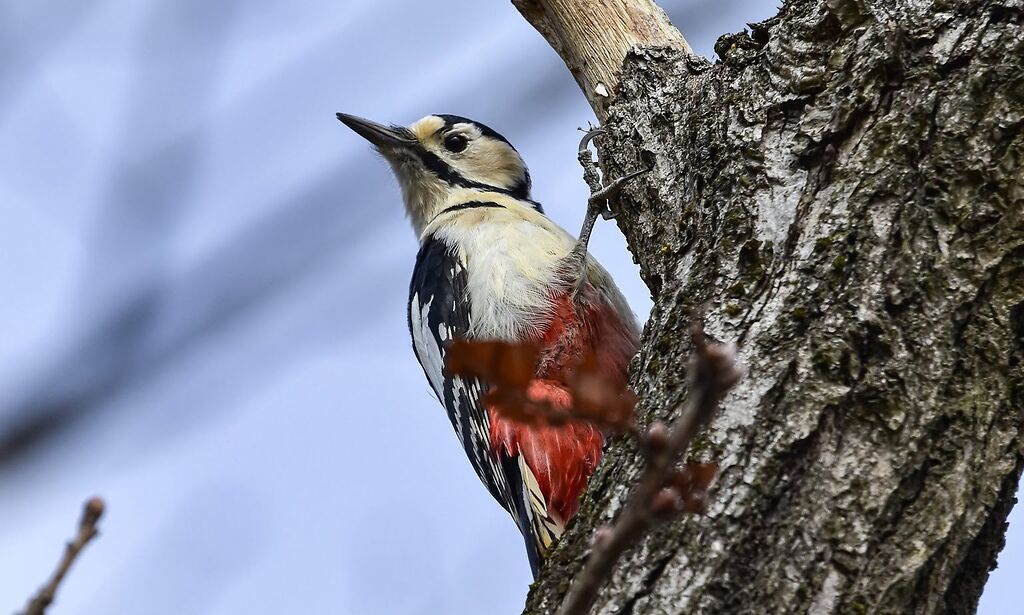How to Kill a Woodpecker

In order to kill a woodpecker, you are going to need a permit from the local authorities. If you do not have a permit and you go ahead with your woodpecker-destruction mission, you will be acting unlawfully.
Have you ever heard of the Federal Migratory Bird Treaty Act? This is an act that has been around since the early part of the 1900s, put in place to protect decreasing populations of certain migratory birds from dwindling any further. Unfortunately, this act was put in place a little too late for some species of birds, particularly woodpeckers, and a number of them are now bordering on critically endangered, and entirely extinct. Two of these woodpeckers are the ivory-billed woodpecker, which hasn’t been officially spotted since the 1940s and 50’s, and the red-cockaded woodpecker. The latter has actually been certified extinct in many of the states it was once found in.
You may wonder why we are telling you this? Well, the extinction (or close to extinction) of these birds is a direct result of what we are doing. Not only are we cutting down their forests, leaving them with no where to set up a home, but we are killing the ones who dare to come into our territories, just desperately looking for somewhere to shelter from predators and elements. It's quite sad really, sad and irreversible. There are reports that the ivory-billed woodpecker may have come back from the dead, so to speak, but there have been very few sightings (less than a handful) between the 1940s to today. There were a couple of sightings in the 80’s, and even one in 2005, but these are no reassurance. If we do not intervene, it won't just be the ivory-billed woodpecker that we lose. Or the red-cockaded woodpecker. It’ll be many other birds, and then many other wild animals also.
Killing a Woodpecker Is Not a Good Idea
Woodpeckers are beneficial to humans more often than they are detrimental to us, just one reason why culling them is a poor choice. They can be pests when they’re knocking on the wooden siding of your home, but this is because they have no other trees to speak of. It is thought that very few forests would support the lives of certain species of virtually extinct or extinct woodpeckers now, so even if we were to bring them back from the dead (so to speak), we would have nowhere for them to go. The problems are still there. We are still cutting down their forests, and humans are still killing woodpeckers in a bid to stop them from bashing their heads against trees and residential or commercial buildings.
What Is the Point Of Woodpeckers?
These birds are good for us because they help to keep the populations of insects down. If it weren’t for birds and other flying animals, such as bats, the insect populations around us would be so high, they'd drive us mad. It wouldn't just be the odd bug bite you had to contend with during the hot summer nights, the skies would be filled with bugs. Life would be intolerable if we didn't have birds, just like woodpeckers, to keep these insect numbers in check.
When woodpeckers peck on trees, they are creating cavities which allow other life forms to thrive. Smaller animals will now have the start of a doorway into a tree hollow, which will keep them safe from predators as well as the cold temperatures of winter. The holes in wood also allow for other animals to gain access to food sources, ensuring the survival of many of them during the winter, once again.
Some woodpeckers, including the red-headed woodpecker, can also help to keep the populations of other pest animals down, alongside insects. These are known to puncture eggs in duck nests, which is useful in areas where duck populations are high, making them a pest. Lastly, they also feast on baby and adult mice and rats, given half a chance. When you think about it, these birds are actually doing us a favor. Or, rather, a few favors!
In short, killing woodpeckers isn’t good for anyone, and unless you're one hundred percent which species you're dealing with, you can’t be sure that you're not culling a potentially endangered species.
